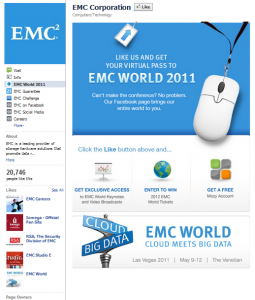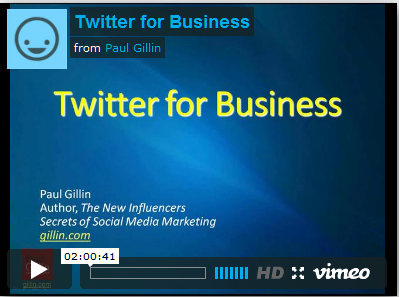Direct Marketing Doesn’t Have to Suck
Direct Marketing Doesn’t Have to Suck
In the weeks leading up to the Direct Marketing Association annual conference in Boston this week, exhibitors were out strutting their best stuff. Last week I got two letters in the mail that appeared to be personally addressed to me in a feminine hand (right). Both turned out to be promotions for companies exhibiting at the conference. One employs people to hand-address envelopes so that they appear to come from a friend. The other has an automated signature device that does much same thing.
I opened both envelopes without realizing what was inside and had to chuckle at how I was taken in. They fooled me good. And then I thought about what that says about the state of direct marketing today. Have we sunk so low that we need to trick people into reading our messages? Is it any surprise that forecasters expect direct-mail marketing to decline nearly 40% over the next two years?
Dump the Junk
Like many people, I’m less interested in reading mass marketing material today than I’ve ever been. There’s far too much good stuff out there. More than 90% of the material that enters my mailbox goes straight to the recycling bin. I unsubscribe from any e-mails that don’t offer clear value to me. Unsolicited e-mail simply gets blocked. Fooling me doesn’t make me a prospect; it makes me mad.
There are some marketing messages, though, that are so valuable to me that I actually look forward to their arrival. Here are a few that I welcome into my inbox:
Read more and comment on my blog
The Myth of Customer Loyalty
The two newest poster children in crisis management provide powerful examples of how today’s brutal business climate punishes companies that take their customers for granted, and how fleeting customer loyalty can be.
Netflix stock has recently sunk below $115, down more than 60 percent from its all-time high reached just two months ago. That was when the company announced it was splitting its DVD-by-mail service off from its streaming video delivery and increasing prices by as much as 60 percent without delivering any immediate improvement in service. In effect, Netflix asked its customers to subsidize its R&D. The move came as competitor RedBox, with nearly 28,000 kiosks nationwide, was presenting serious pressure from below.
Customers are deserting in droves. Research by Magid Advisors found that 30 percent of Netflix’s 25 million customers are at high risk to desert the company. This is about seven times as many as Netflix estimated it would lose back in August. CEO Reed Hastings’s halfhearted apology has only fanned the flames more. Instead of backtracking on the price increases, he simply restated the reasons for imposing them in the first place and sort of apologized for lousy communication.
Read more and comment on The CMO Site
Five Ways B2B Marketers Can Get the Most from Facebook
A lot of B2B marketers have chosen not to get on board the Facebook train for fear that Facebook’s freewheeling culture clashes with their serious business. They prefer LinkedIn, a professional network that’s all about getting business done. There’s a lot of gold to mine on Facebook, however, if you know your objectives and how the community works. After all, 750 million people can’t be all wrong.
Facebook has about as much in common with LinkedIn as a Hawaiian shirt does with a three-piece suit. Your Facebook presence needs to be fun, conversational and provocative. LinkedIn is nine-to-five and Facebook is after-hours. But that doesn’t mean you can’t find buyers and get serious business done.
Everyone knows that Facebook is a good way to reach young people, but did you know that the largest percentage of Facebook users are those in the age 45 – 54 category? Facebook’s audience also skews much more heavily toward women: 62% vs. 45% for LinkedIn. Bottom line: The audience you reach on Facebook isn’t the same as the one you find on LinkedIn.
Facebook success demands knowing a few of the ins and outs of the platform in the community. Here are five tips.
Read more and comment on the PointClear blog
Big Ideas Don’t Have ROI
American Express’ OPEN Forum for small-business owners routinely attracts more than 1 million unique visitors a month. The network has 200 featured contributors, mobile apps and a new social media tracking and management service for members. All for free.
At Dell Computer, 3,000 people have been certified to use social media on behalf of the company. Dell has hired professional trainers; published a four-color, how-to manual; and flown speakers in from around the country to share their wisdom.
Cisco Systems has recently taken advantage of massive layoffs of journalists to hire former BusinessWeek and Wall Street Journal writers to tackle weighty topics, such as the future of the Internet and the impact of social media on education, in a revamped newsroom called The Network. A similar initiative at Intel Corp., called the Free Press, reads like a technology trade magazine. Content like that doesn’t come cheap.
All these programs have one thing in common: There’s no clear return on investment (ROI).
Read more at BtoB magazine online
Tip of the Week: ReadItLater
How many times have you seen an article online that you wanted to read but didn’t have the time? You can bookmark it, but that requires an Internet connection, and you don’t want to clutter up your bookmarks with pages that you only plan to visit once. Also, if you’re like me, you get a lot of reading done on planes, and bookmarks do you no good when you’re offline. Downloading and saving pages is a chore.
Enter ReadItLater. This handy utility runs on just about every browser and mobile platform out there and enables you to save, organize and synchronize the pages you bookmark for reading on any device. The synchronization is particularly cool for travelers who want to read while disconnected. The browser edition is free. A “pro” addition for mobile devices costs a modest $2.99.
Just for Fun: Songfacts
A friend told me about this site, and I’ll never forgive him for it.
- Did you know that John Lennon’s “I Am the Walrus” was really a collection of nonsense lyrics intended to confuse people who tried to analyze Beatles songs?
- Or that Iron Butterfly’s “In-A-Gadda-Da-Vida” was originally titled “In the Garden Of Eden,” but someone, possibly while drunk, changed the name on a demo copy and a record company executive decided he liked the new name better?
- Or that the FBI tried to track down The Kingsmen and Richard Berry, the author of “Louie Louie” over popular rumors that the song’s lyrics were obscene?
All of this trivia, and much more about thousands and thousands of songs, is available at Songfacts.com. Started in 1997 as a database of song information for a few disc jockeys in Hartford, CT, the site has grown to massive size thanks to contributions from the community. The curators don’t say how many songs are in the database, but I quick-counted more than 1,200 songs just beginning with the letter C.
Songfacts is a crowdsourced model. Anyone can contribute, but only information that the administrators believe to be valid makes the official Songfacts section. Anyone is free to weigh in with comments. Careful about visiting this site at work. You’ll want to stay for hours.
![]()
![]()








 PR practitioners who undertake influencer relations programs often discover an odd disconnect between dealing with bloggers and dealing with traditional media: Bloggers don’t operate by the same rules as reporters.
PR practitioners who undertake influencer relations programs often discover an odd disconnect between dealing with bloggers and dealing with traditional media: Bloggers don’t operate by the same rules as reporters.






 In
In 
 The
The  If you, like me, regularly use more than one computer to access the Web, you know how frustrating it can be that all browsers are local. You know the drill: You bookmark a website on your home computer and then can’t find the same site when you’re looking for it at work two days later. Or if you use the saved password function in the browser, you learn the hard way that passwords saved on one computer don’t show up on any others unless you copy them through a laborious backup and restore process.
If you, like me, regularly use more than one computer to access the Web, you know how frustrating it can be that all browsers are local. You know the drill: You bookmark a website on your home computer and then can’t find the same site when you’re looking for it at work two days later. Or if you use the saved password function in the browser, you learn the hard way that passwords saved on one computer don’t show up on any others unless you copy them through a laborious backup and restore process. State of the Union addresses aren’t known for their excitement. Especially in an economy like this one. But we found a great idea to spice things up this year:
State of the Union addresses aren’t known for their excitement. Especially in an economy like this one. But we found a great idea to spice things up this year:  As corporate marketers dive headlong into the annual ordeal known as the annual budgeting cycle, Forrester Research has released an interesting new report that
As corporate marketers dive headlong into the annual ordeal known as the annual budgeting cycle, Forrester Research has released an interesting new report that 

 If you’ve ever pacified someone by kludging together a fix for a problem, technically fixing said problem, but knowing that’s not exactly what the person had in mind when they gave you the assignment, then you’ll appreciate
If you’ve ever pacified someone by kludging together a fix for a problem, technically fixing said problem, but knowing that’s not exactly what the person had in mind when they gave you the assignment, then you’ll appreciate  Failure to link – Links are online currency. Not only do they enable more efficient communication than that available with the printed word (
Failure to link – Links are online currency. Not only do they enable more efficient communication than that available with the printed word (

